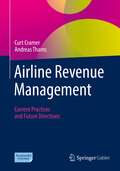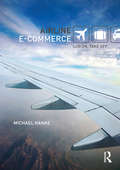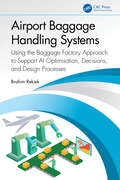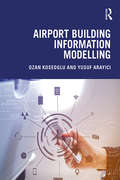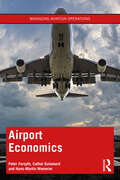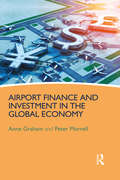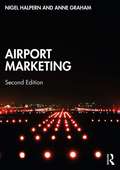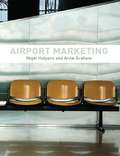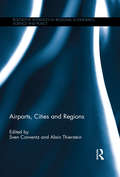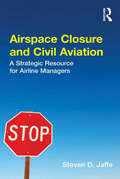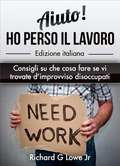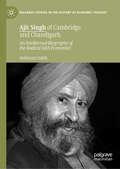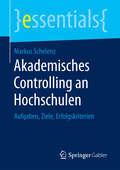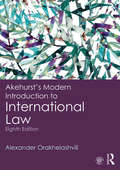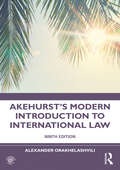- Table View
- List View
Airline Revenue Management: Current Practices and Future Directions
by Curt Cramer Andreas ThamsThe book provides a comprehensive overview of current practices and future directions in airline revenue management. It explains state-of-the-art revenue management approaches and outlines how these will be augmented and enhanced through modern data science and machine learning methods in the future. Several practical examples and applications will make the reader familiar with the relevance of the corresponding ideas and concepts for an airline commercial organization. The book is ideal for both students in the field of airline and tourism management as well as for practitioners and industry experts seeking to refresh their knowledge about current and future revenue management approaches, as well as to get an introductory understanding of data science and machine learning methods. Each chapter closes with a checkpoint, allowing the reader to deepen the understanding of the contents covered.This textbook has been recommended and developed for university courses in Germany, Austria and Switzerland.
Airline e-Commerce: Log on. Take off.
by Michael HankeFrom the few tickets that were sold by Alaska Airlines and former British Midland in December 1995 via the industry’s first airline booking engine websites, global online travel has grown to generate today more than half a trillion dollars in annual revenue. This development has brought significant changes to the airline business, travel markets, and consumers. Today, airlines worldwide not only use e-commerce for online marketing and selling but also as a platform to offer unique services and capabilities that have no counterpart in the physical world. This book is an in-depth introduction to airline e-commerce. It covers a broad scope of areas that are essential to an airline’s ongoing digital transformation. Digital properties & features E-marketing E-sales & distribution Web customer service E-commerce organization E-commerce strategy Written by an airline e-commerce expert and illustrated with numerous examples of leading airlines in this area, Dr. Hanke provides for comprehensive "behind-the-scenes" details of how airline e-commerce works. This book is a crucial companion for students and practitioners alike because it allows the reader to acquire a thorough foundation of airline e-commerce. Furthermore, the book enables the reader to appreciate the ramifications of airline e-commerce in certain corporate areas and to take effective action for a successful e-commerce strategy.
Airlines in a Post-Pandemic World: Preparing for Constant Turbulence Ahead
by Nawal K. TanejaThe COVID-19 pandemic represents an extraordinary inflection point that caught airlines worldwide unprepared, causing CEOs to recalibrate their business models. This book explains why this unprecedented pandemic is different from the past disruptions experienced by the airline industry during the past 50 years, and what airlines and related businesses now can do to adapt to the dramatically changed marketplace. This book presents two future scenarios: continuous improvements and elastic supply. These are considered in three specific contexts for the rebuilding of the airline business. These contexts, in the order of urgency with respect to change from the status quo, are the following. The first context is for airlines to become better prepared to deal with frequent and deeper disruptions that could be localized or globalized relating to such areas as climate change, geopolitics, and cybersecurity. The second context is to collaborate and integrate within the much broader travel ecosystem, possibly using platforms to innovate on new value systems. The third context, which has always been the case and drives the first two, is for airlines to offer real solutions to people’s travel needs, solutions developed with imagination and turbocharged innovation, even as we contemplate new technology airplanes and mobility as a service solutions. This book is recommended reading for all senior-level practitioners of airlines and related businesses, as well as aviation policy makers worldwide.
Airport Baggage Handling Systems: Using the Baggage Factory Approach to Support AI Optimisation, Decisions, and Design Processes
by Brahim RekiekThe competition between airports demands higher-quality services to satisfy passengers. A Baggage Handling System (BHS) serves functions such as baggage sorting, screening, and storage. A successful BHS means bags move between areas as travellers do. Handlers load/unload bags and transfer them between the airport's areas. Automation can save money and bring safety and operational benefits. Warehouses as well as the automotive industry are more advanced technologically in comparison to the airport and especially the baggage handling business. The concept of the Baggage Factory (BF) is an approach (based on Industry 4.0) that simplifies the processes from the moment passengers drop off their bags at check-in till the destination (chutes, carousels, and so forth). Airport Baggage Handling Systems: Using the Baggage Factory Approach to Support AI Optimisation, Decisions, and Design Processes introduces the features of the BF concept and presents how BHS designers can use AI technology to tackle many BHS problems and concerns. The book bridges the gap between airport BHS designers and experts in AI and optimisation. It describes in detail the field of baggage handling using algorithms for sorting bags or optimising the flow. The way the systems are designed is discussed, and a behind-the-scenes look at the BHS industry and how it affects the daily lives of travellers is presented. International and multidisciplinary in approach, this book is an ideal resource for practitioners, students, and researchers involved in the air transportation industry, Tourism, Systems Engineering, Layout and Design, Artificial Intelligence, Assembly Automation, and Logistics fields.
Airport Building Information Modelling
by Yusuf Arayici Ozan KoseogluThis book details how Building Information Modelling is being successfully deployed in the planning, design, construction and future operation of the Istanbul New Airport, a mega-scale construction project incorporating a varying mix of infrastructures including terminals, runways, passenger gates, car parks, railways and roads. The book demonstrates how Airport Building Information Modelling (ABIM) is being used to: • facilitate collaboration, cooperation and integrated project delivery • manage subcontractors and eliminate cost over-runs • reduce waste on site and enhance overall quality • connect people in a virtual environment to encourage collaborative working • provide clients with an effective interface for lifecycle management including: design development, construction documentation, construction phases and BIM and Big Data Integration for future facilities management The book presents a best practice BIM project, demonstrating concurrent engineering, lean processes, collaborative design and construction, and effective construction management. Moreover, the book provides a visionary exemplar for the further use of BIM technologies in civil engineering projects including highways, railways and others on the way towards the Smart City vision. It is essential reading for all Built Environment and Engineering stakeholders.
Airport Economics: Recent Developments In Australasia, North America And Europe (Managing Aviation Operations)
by Peter Forsyth Hans-Martin Niemeier Cathal GuiomardThis book provides a comprehensive guide to the economics of airports for all managers, regulators and educators within the aviation industry. Written by three renowned experts but made accessible and relevant for all those working within the industry, or aspiring to do so, it is the perfect entry point for learning about the underlying economics of airports as a crucial component of the air transport system. It explains the cost structures of airports and then relates these to how airports determine their charges. It explains how charges at different airports vary, whether this is due to different types of traffic, different input prices, ways of producing outputs or different levels of efficiency. Most airports are publicly owned or regulated, and there has been a trend towards privatisation. The book explains how airports have been regulated and assesses how well the regulatory structures have performed; it discusses the trend towards light-handed regulation and the reliance on competition where this exists. The book examines the problems of limited capacity at airports and how these are resolved through slots and charging systems, and the long-term solution of investment in airports—why it is controversial, and how it can be achieved effectively. It also considers the environmental impacts of airports and the issues these pose for managers, from the well-known problems of airport noise to the growing recognition of the impacts of air transport on climate change, and the roles airports play in mitigating these consequences. Written for airport and airline managers, regulators and students, this book will suit Bachelor’s and Master’s programmes on air transport management.
Airport Finance and Investment in the Global Economy
by Anne Graham Peter MorrellWhile there are a multitude of publications on corporate finance and financial management, only a few address the complexity of air transport industry finance and scant attention has been given to airport financial management. This book deals exclusively with airport issues to rectify this. It does this with an analysis of the theoretical concepts relevant to the subject area combined with a detailed investigation of current practice within the industry. Airport Finance and Investment in the Global Economy bridges the gap between much academic research on airports published in recent years – lacking much managerial relevance – and real-world airport financial management. This is achieved by featuring expert analysis of contemporary issues specific to airport finance and funding strategies, illustrated by worked examples from a wide range of different countries to enhance understanding and create a global perspective. The book is designed to appeal to both practitioners and academics. Airport-specific topics include: performance measurement and benchmarking, valuation, tools for financial control and management, alternatives of financing, privatisation, competition and implications of economic regulation.
Airport Marketing
by Anne Graham Nigel HalpernThis accessible, up-to-date, comprehensive, and in-depth textbook introduces students and practitioners to the principles and practice of airport marketing as well as the major changes and future marketing challenges facing the airport sector. It applies principles of marketing within the airport industry, and examines airport marketing and its environment, how to define and measure the market for airport services, airport strategic marketing planning and individual elements of the airport marketing mix (product, price, distribution and promotion). The book integrates key elements of marketing theory with airport marketing in practice. Each chapter contains extensive industry examples for different types of airports from around the world to build on the theoretical base of the subject and show real-life applications. This new second edition has been updated to include: New and expanded content on branding and the passenger experience, marketing partnerships, engagement marketing and customer relationship management. Three brand new chapters on digital marketing, marketing for a more sustainable future, and crisis communications and marketing, in light of the Covid-19 pandemic. New, global case studies and examples throughout. This comprehensive textbook written by two airport marketing experts will be essential reading for air transport students and future managers.
Airport Marketing
by Anne Graham Nigel HalpernIn recent years, the airport sector has moved from an industry characterised by public sector ownership and national requirements, into a new era of airport management which is beginning to be dominated by the private sector and international players. Airports are now complex enterprises that require a wide range of business competencies and skills to meet the needs of their users, just as with any other industry. Moreover, deregulation of air transport markets has made the airport sector much more competitive and given airports greater incentives to develop innovative, proactive and aggressive marketing strategies so that they can reap the benefits from these developments. New types of airline business model, such as low cost carriers, have emerged through deregulation, which in many cases require a completely different approach to be adopted by airport marketers and have encouraged a further deviation from past practice. The travelling public is also becoming more experienced and is generally placing greater demands on the airport operator to deliver a quality product at a time when more stringent controls, especially as regards security, have been introduced. This accessible book fills an important need for an up-to-date, comprehensive and in-depth textbook that introduces students and practitioners to the principles and practice of airport marketing as well as the major changes and future marketing challenges facing the airport sector. It applies principles of marketing within the airport industry, and examines airport marketing and its environment, how to define and measure the market for airport services, airport marketing planning, and individual elements of the airport marketing mix (product, price, promotion and distribution). The book integrates key elements of marketing theory with airport marketing in practice. Each chapter contains extensive industry examples for different types of airports from around the world to build on the theoretical base of the subject and show real-life applications. The dynamic nature of the airport industry requires students and practitioners to have a thorough, up-to-date and contemporary appreciation of airport marketing issues and challenges. This comprehensive, accessible textbook written by two airport marketing experts satisfies this need and is essential reading for air transport students and future managers.
Airports, Cities and Regions (Routledge Advances in Regional Economics, Science and Policy)
by Sven Conventz Alain ThiersteinSince the emergence of urban systems, cities have developed in a mutually inter-dependent process of socio-economic dynamics and transportation linkages. In recent years, Airports worldwide have stepped beyond the stage of being pure infrastructure facilities while the complex dynamics that are taking place at and around international airports represent a crucial element in the post-industrial reorganisation of urban and regional systems. Airports are increasingly recognized as general urban activity centres; that is, key assets for cities and regions as economic generators and catalysts of investment in addition to being critical components of efficient city infrastructure. This book brings together contributions from renowned academic scholars and world leading practitioners to discuss insights gained from theory and practice. The first collection of papers reflects upon the general role and future of airports as well as their specific contribution to competitive advantages within a fast changing business and economic landscape. The second group of contributions ask about the role airports play within the innovation process that is inherently centred on generating and sharing knowledge. The third section of papers investigates the drivers of real estate developments on airport land and in the close vicinity of airports.
Airspace Closure and Civil Aviation: A Strategic Resource for Airline Managers
by Steven D. JaffeThe impact to airlines from airspace closure can be as benign as a two minute extension on an arrival pattern, or as catastrophic as a shoot down from a surface-to-air missile, as the tragic loss of Malaysia Airlines Flight 17 over the Ukraine in July 2014 demonstrates. Airspace constraints come in a variety of forms, both man-made and physical, but all result in operational inefficiencies that erode the economic vitality of an airline. Understanding the root causes of these airspace restrictions, developing strategies for mitigating their impact, and anticipating future airspace closures, are critical for the efficient and safe operation of any airline. This book uniquely examines the technological, geographic, regulatory, and political aspects of airspace closure, with a focus on how airlines continue to adapt to overcome these challenges, providing readers with a framework for identifying issues and solutions in a systematic manner. Filled with historical references and contemporary anecdotes, this book serves both as a practical guide and strategic resource for airline managers navigating their 21st century. organizations around some of the lingering 20th century obstacles.
Airtex Aviation
by Brian J. Hall Carleen MadiganTwo young and inexperienced MBAs buy a virtually bankrupt company. They design a decentralized control system organized around profit centers. As a case in control systems, there is ample detail for a discussion of design issues, control of independent profit centers, and details about decentralized control. A rewritten version of an earlier case.
Aiuto! Ho perso il lavoro: Consigli su che cosa fare se vi trovate d’improvviso disoccupati
by Richard G Lowe Jr Sonia Dal CasonMolti di noi sono orgogliosi del lavoro o del mestiere che fanno. Abbiamo bisogno di un lavoro per nutrire le nostre famiglie, pagare l'affitto, fare manutenzione all'auto e permetterci dei piccoli lussi di tanto in tanto. Sul posto di lavoro entriamo in contatto con altre persone e spesso è come una seconda casa. Questo non deve sorprenderci dal momento che molti di noi trascorrono due terzi o più della vita in ufficio. Quindi l'improvvisa perdita dell'impiego può tagliarci le gambe, deprimerci e, a seconda della situazione finanziaria individuale, può diventare una situazione di assoluta emergenza. Per coloro che vivono di busta paga in busta paga, l'improvvisa perdita del posto può significare perdere la casa oppure non mangiare. Il proposito di questo libro è di aiutare voi, dipendenti licenziati di recente o che sentite che il licenziamento si avvicina, a trovare le risposte che vi servono a compiere il salto da un lavoro all'altro nel modo più liscio possibile.
Aiuto! Il mio capo è fuori di testa!
by Richard G Lowe Jr Sonia Dal CasonMigliorate la vostra vita lavorativa per raggiungere una maggiore produttività, per ottenere potenziali aumenti e una vita più felice. Il vostro capo vi fa ammattire o vi tormenta? Lui o lei vi avviliscono, negandovi aumenti o promozioni o controllando ogni vostra mossa? Siete felici della vostra condizione lavorativa? Capite che non cambierà nulla se non fate qualcosa in proposito? Non vi piacerebbe non vedere l'ora di andare a lavorare? Non gradireste essere rispettati, fare più soldi e tornare a casa sentendovi soddisfatti per il lavoro ben fatto? Io ero dove siete voi oggi. Nella mia vita ho avuto ogni genere di manager, da un capo che è stato dichiarato malato di mente a quello con la mania del controllo e, il peggiore di tutti, il capo che stava per andare in pensione e che non voleva approvare o fare niente che potesse dare uno scossone alla barca. Mi sono sentito attaccato, sottovalutato e sopraffatto, talvolta nello stesso momento. Queste situazioni hanno influito sulla mia salute e sul mio benessere e hanno causato una sensazione di impotenza e di depressione che nulla sembrava risolvere. La vita pareva non essere altro che un fallimento causato dalla svalutazione e dalla negatività. Alla fine ho capito che potevo fare qualcosa per il problema del capo fuori di testa. Esistevano molte opzioni, da una semplice conversazione fino a trovarmi un nuovo impiego. Ho compreso che si deve essere in due per essere una vittima - il persecutore (il capo fuori di testa) e la vittima. Ho quindi deciso di rompere il circolo vizioso. * Convincetevi che potete fare qualcosa per raddrizzare la situazione. * Imparate le varie opzioni che avete a disposizione. * Costruitevi una via di fuga da usare se le cose non migliorano. * Cercate persone che possano aiutarvi a intraprendere azioni correttive. Non lasciate passare un altro giorno senza far nulla per dare un calcio nel sedere al boss fuori di testa. Acquistate una cop
Ajetreo Lateral de Estudiante Universitario: Más De 100 Formas De Comenzar A Ganar Dinero Extra Para El Estudiante Universitario En Quiebra
by Kara Ross¿Estás buscando una forma de generar dinero extra mientras aún estás en la escuela? ¿Tiene dificultades para pagar la universidad y se pregunta si hay alguna manera de generar ingresos adicionales para no tener que dejar la escuela con deudas? ¿Quiere crear un método para generar efectivo de modo que no tenga que trabajar de 9 a 5 una vez que se gradúe? ¿Tiene metas, pero no sabe cómo alcanzarlas? ¿Ha estado buscando un recurso que lo ayude a aprovechar al máximo su vida? Si esto te suena, ¡sigue leyendo! Hay muchas formas de ganar dinero, especialmente muchas más personas. Si tiene la unidad y la asistencia para aprender mucho, PUEDE hacerlo. Pero a veces, luchamos para averiguar qué hacer que realmente nos dirá algo. Simplemente tenemos una voluntad mental, y nuestras ideas para hacer dinero siguen fuera de nuestro alcance. Tener un ajetreo lateral lo ayudará a lograr todos sus objetivos, sin importar cuán grandes o pequeños sean. Independientemente de quién sea usted y de lo que quiera lograr, la base del empuje lateral es la misma para todos. Este libro lo ayudará a comprender todo lo que necesita saber sobre los ajetreos secundarios, incluidos los beneficios y desafíos que traen consigo, y le proporcionaré un proceso paso a paso para elegir y lanzar un negocio de ajetreos secundarios junto con algunos ejemplos prácticos y ejercicios. que puede utilizar para empezar de inmediato.
Ajit Singh of Cambridge and Chandigarh: An Intellectual Biography of the Radical Sikh Economist (Palgrave Studies in the History of Economic Thought)
by Ashwani SaithThis book examines the life and work of Ajit Singh (1940-2015), a leading radical post-Keynesian applied economist who made major contributions to the policy-oriented study of both developed and developing economies, and was a key figure in the life and evolution of the Cambridge Faculty of Economics. Unorthodox, outspoken, and invariably rigorous, Ajit Singh made highly significant contributions to industrial economics, corporate governance and finance, and stock markets – developing empirically sound refutations of neoclassical tenets. He was much respected for his challenges both to orthodox economics, and to the one-size-fits-all free-market policy prescriptions of the Bretton Woods institutions in relation to late-industrialising developing economies. Throughout his career, Ajit remained an analyst and apostle of State-enabled accelerated industrialisation as the key to transformative development in the post-colonial Global South. The author traces Ajit Singh’s radical perspectives to their roots in the early post-colonial nationalist societal aspirations for self-determination and autonomous and rapid egalitarian development – whether in his native Punjab, India, or the third world – and further explores the nuanced interface between Ajit’s simultaneous affinity, seemingly paradoxical, both with socialism and Sikhism. This intellectual biography will appeal to students and researchers in Development Economics, History of Economic Thought, Development Studies, and Post-Keynesian Economics, as well as to policy makers and development practitioners in the fields of industrialisation, development and finance within the strategic framework of contemporary globalisation.
Ajuste de cuentas: Cómo controlar con éxito tu economía familiar
by Vicens CastellanoVicens Castellano te ofrece con un estilo desenfadado, pero riguroso y eficaz, las claves necesarias para descubrir en qué te equivocas a la hora de administrar tu dinero. ¿Estás cansado de que se te acabe el dinero antes que el mes? ¿Te gustaría estabilizar tus finanzas, que tu dinero fuese a alguna parte y sentir que prosperas? Ha llegado la hora de asumir responsabilidades y afrontar la economía familiar con profesionalidad, primer paso para retomar el control de tus finanzas. Tener las ideas claras sobre cómo funciona el dinero y emprender la acción siguiendo las pautas que aquí se detallan te permitirán salir de tu situación paso a paso y dar la vuelta a tu economía. Tus resultados financieros son fruto de tus propios actos, que dependen de las ideas y las decisiones que adoptes. Ha llegado el momento del ajuste de cuentas.
Akademisches Controlling an Hochschulen: Aufgaben, Ziele, Erfolgskriterien (essentials)
by Markus SchelenzDieses essential widmet sich dem Akademischen Controlling an Hochschulen. Letzteres hat die Aufgabe, die hochschulinterne Steuerung durch entscheidungsrelevante Informationen zu unterst#65533;tzen sowie die Umsetzung der operativen und strategischen Ziele der Hochschule zu begleiten. Am Beispiel der Wirtschaftsuniversit#65533;t Wien wird f#65533;r den Bereich Lehre anschaulich gezeigt, welche konkreten Aufgaben dem Akademischen Controlling dort zugeschrieben werden und welche Herausforderungen bei ihrer Umsetzung zu bew#65533;ltigen sind. Schlie#65533;lich werden die Erfolgsfaktoren f#65533;r ein etabliertes Akademisches Controlling aufgezeigt. Damit kann das Werk unterst#65533;tzend beim Aufbau eines Hochschulcontrollings herangezogen werden.
Akamai Technologies
by Thomas R. Eisenmann Eric J. Van Den Steen Benjamin EdelmanAs the leading content delivery network, Akamai helps Internet companies deliver Web site content to end users with fewer delays and lower costs. Describes the strategic management challenges facing Akamai in early 2004. The company is poised to offer its next generation of services for enterprise customers, which will allow them to run Internet-enabled applications ("Web services")--on demand, with minimal capital investment--from Akamai's network of 15,000 servers located in ISP facilities at the Internet's "edge"--close to end users. Many large enterprise software companies have developed proprietary platforms for creating and managing Web services. Akamai must decide which of these software companies would be attractive partners and whether it can and should remain uncommitted to a platform as it helps customers deploy Web services. A rewritten version of an earlier case.
Akamai's Edge (A)
by Eric J. Van Den SteenIn 2009, Paul Sagan, CEO of Akamai, the leading online content delivery network with a 60% market share, needs to decide how to respond to aggressive entry in its market, whether and how to pursue the explosive growth in online video, and whether to stay with its distributed network model or move towards its competitors' more centralized design.
Akamai's Underwater Options (A)
by Brian J. Hall Houston Lane Jonathan P. LimAkamai's stock price declines dramatically with the NASDAQ in 2000, causing virtually all employee options to go underwater. Ownership and retention incentives are largely destroyed, and employee morale falls sharply. Management weighs the pros and cons of various alternative "solutions" to this problem (including repricing, issuing a new supplemental grant, canceling the underwater options and issuing a delayed regrant, and making a tender offer to exchange underwater options for fewer shares of restricted stock).
Akbank: Options in Digital Banking
by Esel Cekin Rajiv LalThis case discusses the digitalization strategies of a leading bank in Turkey, Akbank, and how to position its digital banking products going forward. The Turkish banking industry was undergoing a transformation prompted by the demands of the country's digitally savvy, young population, and by new regulations on consumer banking that threatened banks' profitability. Akbank had a legacy as the best financial services company in Turkey, but it knew it needed to innovate to maintain that reputation in the digital era. The bank's chairman, CEO, and EVP of digital banking unit were evaluating their options. Should they have a separate P&L for the digital banking unit? Should they create a separate brand for digital banking? How should they structure digital banking so Akbank would remain profitable while achieving the vision for innovation and growth laid out by the bank's chairman?
Akbar Se Aurangzeb Tak
by W. H. MorlandThe second stage of the Economic history has been described in this book. It details the ousting of the Portuguese from Indian by Dutch and English. It gives a detailed analysis of the economic history of the times.
Akehurst's Modern Introduction to International Law
by Alexander OrakhelashviliAkehurst’s Modern Introduction to International Law continues to offer a concise and accessible overview of the concepts, themes and issues central to international law. This fully updated eighth edition encompasses the plethora of recent developments and updates in the field, and includes new dedicated chapters on international human rights, self-determination and international economic relations, an extended history and theory section reflecting the evolution of new and critical approaches in the field and a greater focus on terrorism and international criminal law. New and updated chapters include: Creation and recognition of States Territory Law of the sea Immunities State succession Nationality and individual rights Protection of the environment Settlement of disputes Use of force and armed conflict With a distinctive cross-jurisdictional approach which opens up the discipline to students from all backgrounds, this book will arm the reader with all the tools, methods and concepts they need to fully understand this complex and diverse subject. As such, this is an essential text for students of international law, government and politics, international relations, and a multitude of related subject areas. This textbook is supported by a companion website: www.routledge.com/cw/orakhelashvili.
Akehurst's Modern Introduction to International Law
by Alexander OrakhelashviliFirst published in 1970, Akehurst’s Modern Introduction to International Law rapidly established itself as a widely used and successful textbook in its field. Being the shortest of all the major textbooks in this area, it continues to offer a concise and accessible overview of the concepts, themes, and issues central to the growing system of international law, while retaining Akehurst’s original positivist approach that accounts for the essence and character of this system of law. This new ninth edition has been further revised and updated by Alexander Orakhelashvili to take account of a plethora of recent developments and updates in the field, accounting for over forty decisions of international and national courts, as well as a number of treaties and major incidents that have occurred since the eighth edition of this textbook was published. Based on transparent methodology and with a distinctive cross-jurisdictional approach which opens up the discipline to students from all backgrounds, this engaging, well-structured, and reputable textbook will provide students with all the tools, methods, and concepts they need to fully understand this complex and diverse subject. It is an essential text for all undergraduate and postgraduate students of international law, government and politics, and international relations. This book is one of the only textbooks in international law to offer a fully updated, bespoke companion website: www.routledge.com/cw/orakhelashvili.
